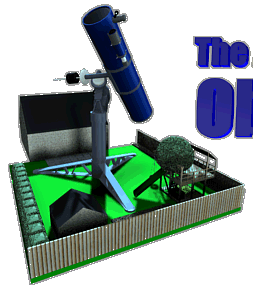 |
 |
|
Astro-Video Cameras |
Go back to HOMEPAGE
 |
 |
|
Astro-Video Cameras |
Go back to HOMEPAGE
|
Toshiba IK-WB11A This is a type of colour security camera referred to as a "netcam", meaning that you communicate with it using an ethernet protocol instead of analog video cables and serial cables. I became familiar with this camera back around 2004 when we had our first child. We wanted a webcam to put in our baby's room so we could monitor things from different parts of the house. I already had a LAN setup in our house, so a netcam seemed like a good idea. I tried a couple different cheaper cameras, but eventually settled on this Toshiba model. What struck me on this camera is the high resolution (1280x960) and great low light level performance (can clearly see everything in the room with only a night light on). Years later I thought maybe the camera was worth trying for video astronomy. I bought a used one off Ebay and proceeded to hack it apart so as to make it suitable for mounting prime focus to my telescope. To do this I had to totally disassemble the camera, and remove the CCD head from the pan/tilt ball. I then custom built a new front plate for the camera housing, with a cannibalised front off an old security camera to get the C-mount interface. I was pretty happy the way it all went together. I have had lots of opportunity to assess the camera's performance now on various objects, and on various telescopes. The high resolution really pays off when viewing the Moon, for which it generates amazing images. On planets the high resolution is a plus as well, but control over contrast and colour saturation is lacking when compared to other cameras like the Mallincam (the Toshiba has auto-gain and auto-white balance that can not be turned off). When pushed to its maximum exposure time of 4sec the images are very noisy, filled with 1000's of hot and warm pixels. I was able to see brighter deep-sky objects like M42 but the colour and noise made the views very non-pleasing. Performance would probably be better if I removed the built-in IR filter, however I want to continue to use the camera for terrestrial imaging as well so I have left it in for now. One additional application for which the camera works great is collimation of my SCT. The camera's high resolution gives very nice clear images of the airy disc, and an exposure of 1sec per frame is plenty to get a sufficiently bright image of the candidate collimation star. The camera's excellent performance on the Moon has inspired my interest in that object, culminating in my Moon Phase Project page. The sample images below are all single video frames from the Toshiba, from left to right: Perseid meteor with 6mm lens, crater Copernicus through LX10 @ f/10, M42 Orion Nebula through LX10 @ f/3.3, Saturn through LX10 @ f/20. |
| Mallincam Junior This is the most recent camera I've purchased. My observing with the Mallincam Xtreme has led me to thinking that I will eventually want to be able to guide my mount for longer exposures. The opportunity to buy a used MCJr just happened to pop up recently, so I jumped on it. They are presently (as of spring 2011) out of stock with no resupply date set, so I'm kind-of lucky to get one I think. The camera is designed as an entry level camera for video astronomy. It uses a similar CCD sensor to the adult Mallincams, but does not have as much signal conditioning and amplifying circuitry. The MCJr also does not have a Peltier cooler for improving CCD sensitivity and reducing hot/warm pixels. The features for the MCJr as quoted on the Mallincam website are as follows:
|
|
Mallincam Xtreme I have tried hard over the past year and a half since I started back into astronomy to make the most of visual observing. I pushed my 8" telescope as far as I think I can for being located in the middle of a fairly large city. I have even observed from the significantly darker skies up at my in-laws'. I have enjoyed every bit of that time I've spent with eyepieces in hand...but you know what, I have had many more "oooh" and "wow" moments watching what people can do with video astronomy on NightSkiesNetwork. It did not take me long to decide that a Mallincam was the way to go. I hesitated buying for a while, not sure if I wanted to add the extra complexity of cables and such to do video astronomy, but in the end I am glad I made the choice to move in this direction. I have had the camera only 3 months when I wrote this page, but already I love it. At the time of my purchase of this camera in January 2011, this was the top-of-the-line Mallincam model. It is a culmination of improvements and refinements that Rock has made to his cameras on a continuous basis over the past several years. This model is similar to the other adult Mallincam models (VSS & Hyper) in that it is custom designed and built with video astronomy in mind. It uses a Peltier cooler for the CCD, and advanced circuitry for signal amplification (gain) and other processing. The Xtreme excels over its older brothers in that it has essentially no limit on the image exposure time (Mallincam'rs use the term "integration time", which is limited to 100 minutes). It also has the super sweet feature of being completely controllable from remote using a PC over serial cable. The features for the Xtreme as quoted on the Mallincam website are as follows:
|
Go back to HOMEPAGE
Last updated: 07-Apr-11
|
Copyrights to all content from the webpages hosted here belongs to Jim Thompson. Nov. 2009. |